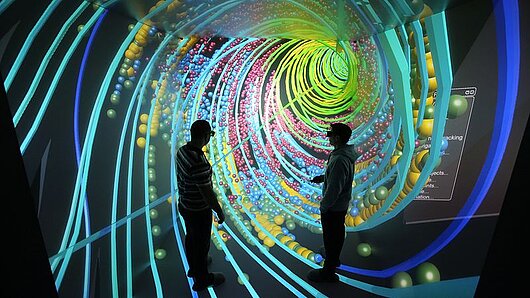High-Performance Computing Center Stuttgart

In late June, the Supercomputing-Akademie — a continuing professional education program organized by the High-Performance Computing Center Stuttgart (HLRS) in collaboration with partners at Ulm University, the University of Freiburg, and SICOS-BW — launched a new training module covering state-of-the-art technologies and applications for visualization. Like other courses offered by the Supercomputing-Akademie, this new module is designed to give industrial users of high-performance computing (HPC) access to the skills they need to take full advantage of the opportunities that HPC offers.
The five-week course is being taught by visualization experts at HLRS. The course began with an introduction to the use of visualization in the context of simulation, including virtual reality (VR) and augmented reality (AR). Participants will then dive deeper into VR and AR, learning about graphics hardware, interfaces, and important considerations related to human perception and the use of color. Finally, trainees will have an opportunity to perform interactive exercises on the HLRS training cluster, using the open source programs ParaView and COVISE to create technical and scientific visualizations.
The new continuing education module is designed to be completed in parallel with participants' day-to-day professional activities. Although the Supercomputing-Akademie typically uses a blended learning format — a combination of in-person and online learning — the current COVID pandemic required that the course be moved completely online. Following an online kick-off meeting, participants will have access to a series of lectures and take part in practice exercises. An additional online meeting of all trainees will take place at the end of the course, and a certification test will be administered.
The Supercomputing-Akademie is a continuing education program offered in conjunction with the project "Modular Continuing Education for HPC Expertise (MoeWE)." The project is funded by the Baden-Württemberg Ministry of Social Affairs and Integration with the support of the European Social Fund as well as the Baden-Württemberg Ministry of Science, Research, and the Arts. During the current funding phase, participation in the course is free of charge.
"Visualization" is the sixth course developed by the Supercomputing-Akademie to date. Other courses cover topics including economics and sustainability of HPC, performance optimization, parallel programming, simulation, and the planning, building, and running of HPC-clusters. An additional module focused on data management will launch for the first time in the fall of 2020.
— Christopher Williams